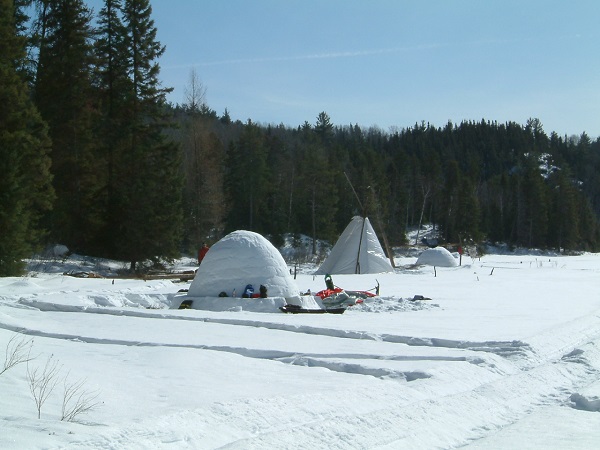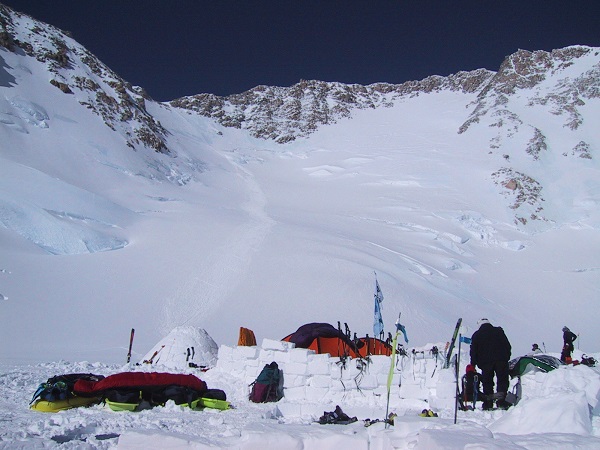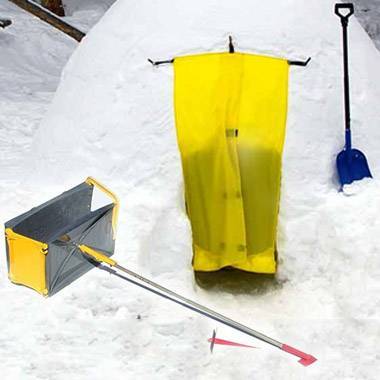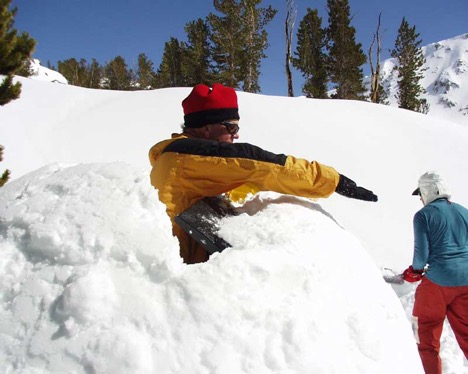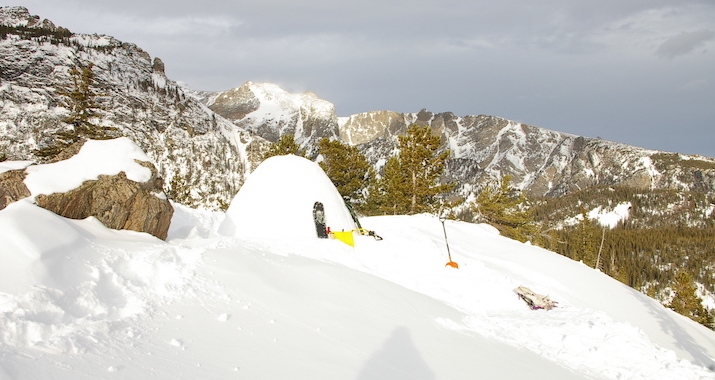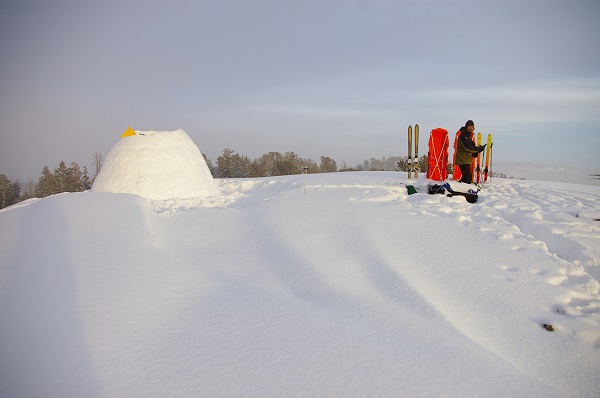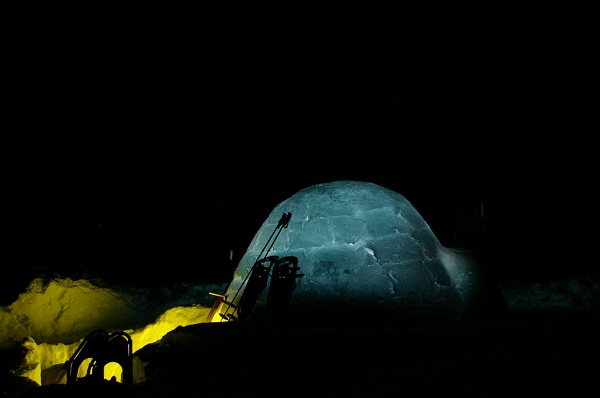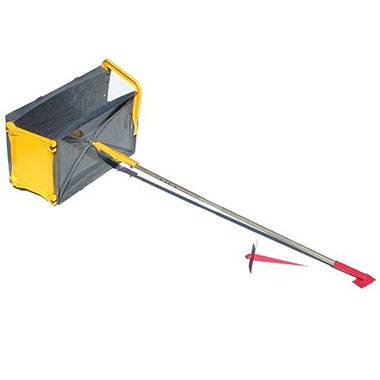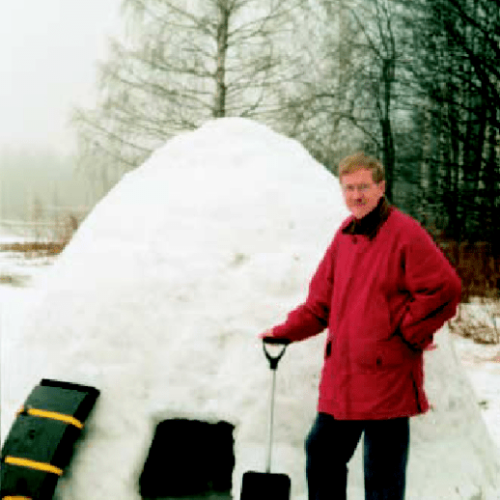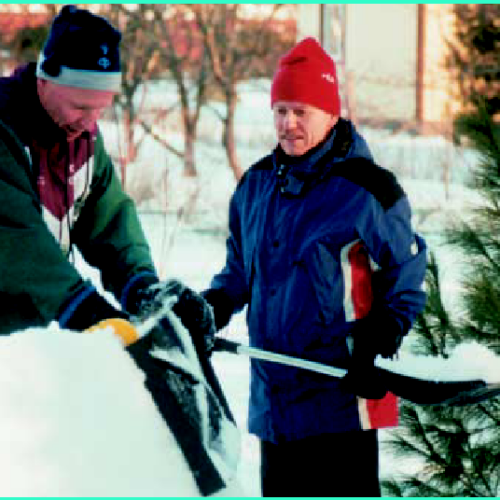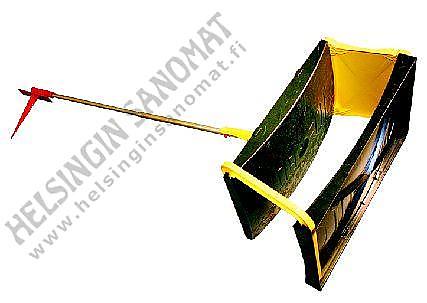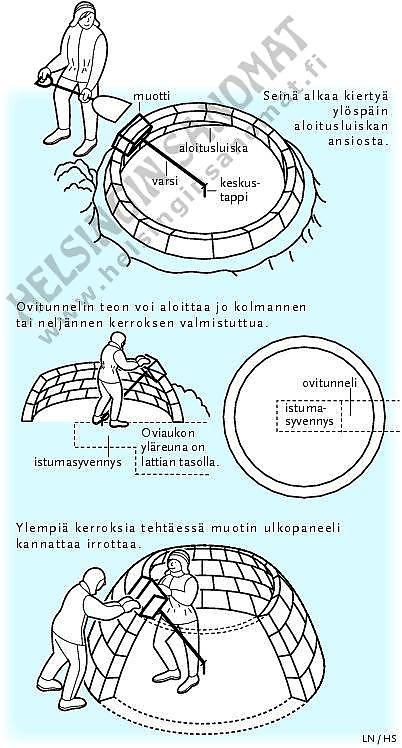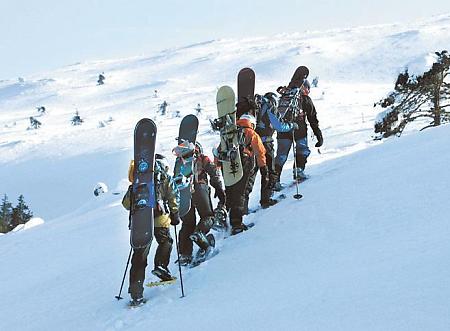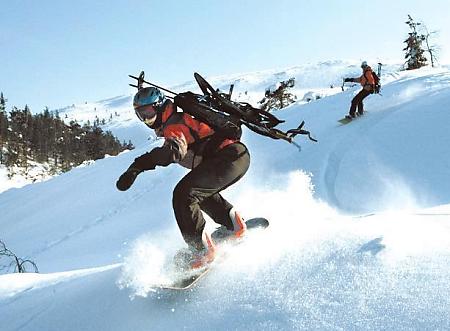Why ICEBOX® Igloos Make the Best Winter Shelter for Backcountry or Backyard Snow Camping
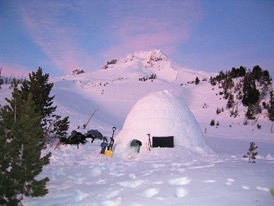
You may already know the advantages of snow camping but if not, you may be missing an exhilarating and visceral experience. No noise, no
crowds, the incredible beauty of the winter landscape, and the peace and serenity of nature are nearly overwhelming.
At first, many people scoff at the idea of spending a night camping in an igloo. It might seem like a far-fetched, outdated idea. However,
with a little research we learn that there is a very good reason why the Inuit have been building them for centuries. It’s not because they didn’t have any other options. It’s because igloos are actually the best option for a warm, winter shelter! Far better in fact than any snow tent you can find. Plus, there is really nothing quite like camping in an igloo in a picturesque winter landscape.
These facts were recognized by Ed Huesers (Igloo Ed) in 1975 when he moved to Colorado. Years of winter camping had taught him that real snow shelters were warmer, stronger, and quieter than other tents designed for winter snow camping. However, since snow caves could only be built in places with deep snow, his choices for snow shelters were limited.
That’s when he thought of building an igloo and created the ICEBOX® Igloo Tool. The ICEBOX® Igloo Block Building Tool gives a new and fun way to experience winter camping. Since igloo camping is rooted in ancient traditional winter lifestyles, just the nostalgia alone can make it a fun winter snow adventure whether you are building a primary shelter for backcountry winter camping with friends or using it as an awesome toy for backyard snow camping fun with your kids.
Advantages of Building an Icebox Igloo vs a Snow Cave or Quinzee
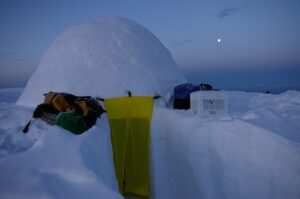
The ICEBOX® built igloo for winter camping is easier than building snow caves or quinzees in snow country. It may not turn you into a winter survivalist but an Igloo is a superior alternative to building snow caves or quinzees. The three most beneficial aspects of building igloos using the ICEBOX® Igloo Tool over the dogged shoveling involved with building snow caves are work, work, and work. It takes 50% or less time and effort using the ICEBOX® to build a snow shelter. An igloo can be left in place for the winter camping season. It is much easier to find when you want to return during the season. It is much less resource and physically taxing to set up your season-long winter camp.
Don’t Bust Your Hump Building A Snow Shelter
The effort required to build snow caves or quinzees expends calories causing fatigue and sweat. While a person’s internal body temperature heats up from the exertion inside a cave or quinzee, external skin gets cold and damp from the wetness of sweat and melting snow. This moisture easily soaks into gloves and coats making the cold unbearable. People digging out a snow cave quickly become uncomfortable and tired. Maybe even close to hypothermia as they fluctuate back and forth between being hot from digging to standing around and freezing while taking a breather. A good thing to do in this situation is to wear Gore-Tex clothing and take care to stay as dry as possible.
With snow flying and dripping, you are going to get wet, So a better thing to do is to avoid this situation altogether. Enter the ICEBOX®. Building the ICEBOX® igloo takes less time, less energy, and you won’t be fatigued when you’re done. Indeed, you’ll still have plenty of stamina (and probably daylight) left to organize the camp, cook, and set up your sleeping bags. The igloos make for a very enjoyable evening.
ICEBOX® igloo shelter blocks are built in sequence on the wall meaning you are only handling the snow once. The igloo blocks are built in place. The builder is able to kneel or stand rather than lying down or kneeling like a snow caver. Kneeling is only required for the first row.
When building an ICEBOX® igloo for snow camping or as a snow shelter, you’ll be outside the entire time, until the very last block. Your body heat is cooled by the outside temperature and stays cool while falling snow isn’t melting onto the top of your head. So your winter camping trip doesn’t become winter survival, buy an ICEBOX® Tool, it’s the cooler way.
Igloos Are Physically and Environmentally Friendly
Prime real estate is not always easy to come by when scouting out a spot for a snow cave. The snow isn’t always deep enough and drifts aren’t always in the most desirable of places. Snow caves built into drifts are smack dab in the middle of nature’s vengeful path. The word “drift” brings up images of wind, and that wind isn’t going to cease just because there’s a new hole in the snow. The wind will still blow, will seek entrance into your snow cave sanctuary, and has predetermined that where you decided to make your home for awhile is where it will continue to stack up more snow and attempt to bury you and your efforts.
Picking Your Spot
Do the words winter survival come to mind? Snow cave doors and vent holes will also pile up with new snow, snow will continue to invade and penetrate, and you’ll probably get all grouchy again. But not as grouchy as if some unsuspecting passerby or fellow camper walks over the top of your snow cave and, quite literally, drops in on you. Not so with an ICEBOX® igloo. It’s above ground, wherever you want to put it, and highly visible. So pick yourself some prime real estate. A nice calm spot. A sunny exposure. A scenic view. Freedom of choice, yet another ICEBOX® advantage.
See The Light
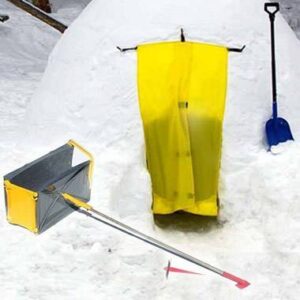
Snow caves can become like an earthly black hole, blocking available light and zapping your energy, making you feel like a human collapsing star. Inside an ICEBOX® igloo, you’ll see the light. The snow used to fill the ICEBOX® Tool, whatever type, is re-mixed, making it airtight and creating a strong bond. It’s brighter inside because the igloo walls are thinner, allowing light through, in contrast to the snow cave’s black hole effect. Even full moonlight can penetrate an ICEBOX® igloo. The benefit of this additional light is a saving of valuable candle and flashlight resources. It’s warmer, too, because with the airtight bond, cold air doesn’t seep through the snow crystals like it would in a snow cave. You won’t have to sleep with your water bottle as your bed mate to prevent it from freezing. See the light. Feel the warmth. Fill the ICEBOX®
Advantages of Backpacking with the ICEBOX Igloo Tool vs a Winter Tent
The ICEBOX® igloo maker weighs just 2.3 kg, which is much lighter than a 4-season tent. Since one ICEBOX® igloo maker can create a shelter that houses multiple people, it actually helps save weight while traveling.
Backpacking with the tool is simple because of the packable design and the supplied straps and buckles. It’s also a fraction of the cost of a winter tent. Enjoy quiet, peaceful camping with no flapping in the wind like a tent.
Winter camping should be fun. Part of it being fun means it is safe and reasonably comfortable. You don’t want to freeze and cause yourself grief. There is also the peacefulness of winter camping in an igloo that cannot be duplicated. There is a visceral component to spending the night in an ancient snow habitat. Not to mention that the experience is unique in that it is very quiet and calm. The wind can be howling and you are safe and secure inside a dome of silence and calm.
